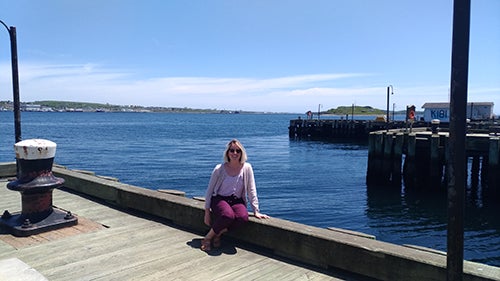In early June, MEOPAR hosted a conference session on presenting risk-related science and academic research findings to the general public.
For scientists, academics and policy makers, communicating difficult, emotional, or complex information about natural disaster risk to the public is a challenge. How do we disseminate the right information, in a concise, respectful and effective way to the people who need it most?
Panelists of this session included speakers from the Union of Concerned Scientists, an academic in a science-based field, and a professional risk communicator who typically works with non-profit organizations and communities they serve.
Here are takeaways that I found valuable:
- 'Know your Audience': Who are you delivering this message to? What did they come here to learn? All audiences come with an agenda. Learn the goals of your audience ahead of time and tailor your message to them. Where is your audience from? It is important to be conscious of language, cultural references and slang.
- Deliver with precision: It is critical to be precise. Examine your message and ensure it is delivered in short sentences, free of jargon and other ambiguities.
- Watch your tone: No matter how you deliver a message, you deliver both content and feeling. The adage still rings true – it is not what you say but how you say it. Content is always secondary to tone – your audience can forget your content, but will rarely forget how its delivery made them feel
- Heed the moral high-ground: Academics, scientists and policy makers have a very particular kind of knowledge on a subject. Often, they hold considerable weight or influence in said subject, but they do not always hold the moral high ground. For instance, when experts discuss planning for natural disasters, academics refer to an 'acceptable level of risk', but for whom? Who is accepting the risk? Who is best poised to define 'acceptability'?
- Embrace uncertainty: As humans, we usually want easy answers, but unfortunately, we must learn to embrace uncertainty. Examine the evidence available and openly discuss the limitations of this information. Communicate these limitations to the public.
- Our audiences are human: Sometimes the knowledge we hold perseveres even when we are presented with new and 'more correct' information (called, belief perseverance). Or, the first thing we learn about a subject tends to be the basis by which we compare all new information on that subject, regardless of whether that first piece of information was right (called, anchoring). We are constantly fighting against other context and content to understand new information, and we usually have inconsistent beliefs (called, cognitive dissonance). Be conscious that both experts and audiences suffer from the same human limitations.

Sarah Wilkinson at the Halifax Waterfront during MEOPAR's Annual Scientific Meeting in Halifax, Nova Scotia.